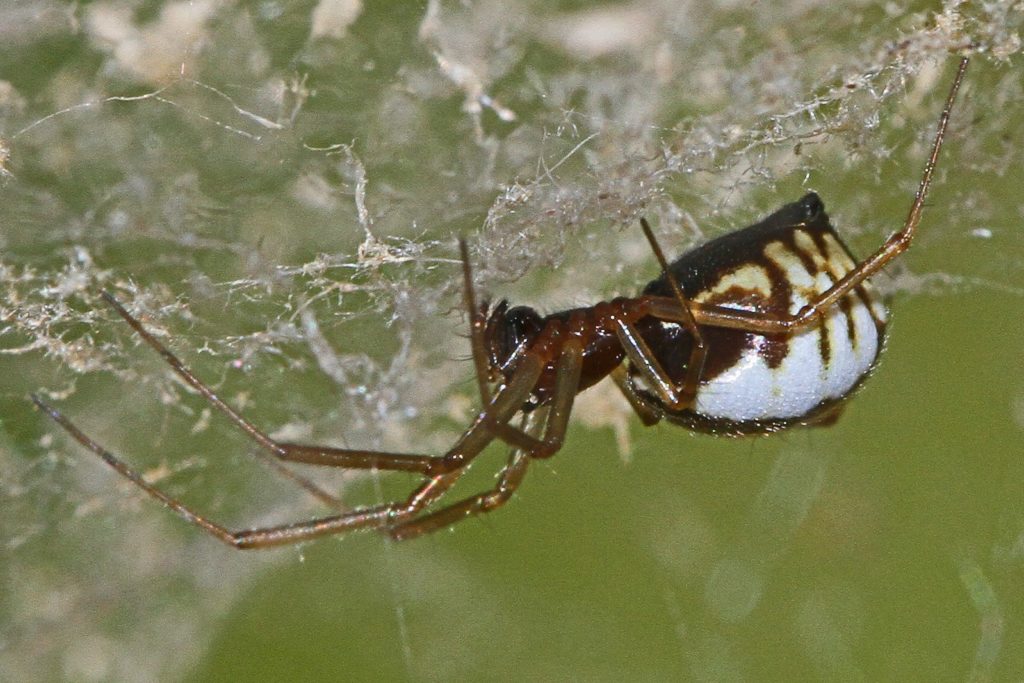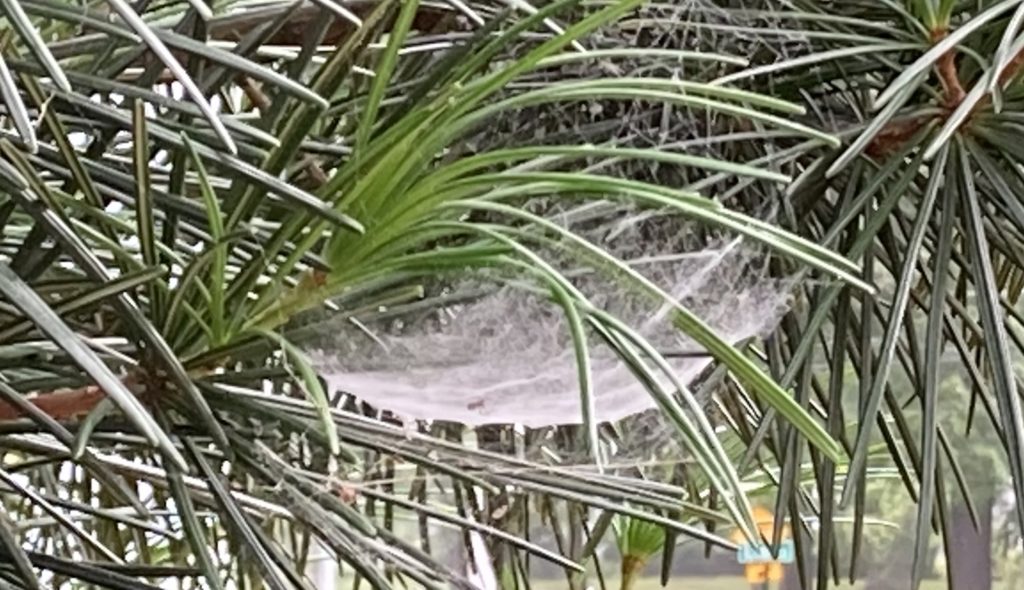Almanac: Dewy Hammocks

Female bowl-and-doily spider. Photo: Wikimedia Commons
My mom always insisted that she enjoyed hot, muggy weather. I didn’t inherit that gene. How anyone can enjoy salt-clumping, sweat-producing, mold-inducing humidity is beyond me. After spending the past two weeks in dry western air, I’ve been grumpy with the Amazonian moisture in the air these past few days. But early this morning I grudgingly recognized that swampy, sopping air does have at least one redeeming quality: all that water, condensed as dew, allows us to see the beauty and intricacies of normally-invisible spider webs.
Walking in my backyard yesterday I saw dozens of spider webs of various types on the lawn and in trees, all of which vanished from sight (unless I looked very closely indeed) several hours later after the sun burned off all of the dazzling droplets weighing down all of the webs. The most common webs I saw were beautiful hammock-shaped nets about the size of an outstretched hand slung between low branches of trees or bushes. Below and above the hammocks were looser webs that seemed to help support the hammock in some way.

Try as I might, I saw no sign of the weavers, which leads me to suspect they were made by small “bowl-and-doily” spiders, a common species in the eastern US that belong to the large Linyphiidae family of spiders, all of which create sheet webs of various kinds. (There are five basic types of spider webs: the classic spiral orbs; “tangle” webs [e.g., cobwebs]; non-sticky funnel webs that shelter their builders, tubular webs, and sheet webs.)
The sheet webs of the bowl and doily spider consist of an upper “bowl” and a flatter, looser, lower part, the “doily.” The spider hangs upside down on the bottom of the “bowl” waiting for small insects to fly, crawl, or drop into the web. That’s a great strategy because it allows the spider to survey its web while concealing itself from predators (and curious humans).
When a prey lands in the bowl (usually a small insect like a fly or gnat) the spider bites the prey from the underside, paralyzing it. Then the victim is pulled through the web to the lower level and the spider waits while the injected venom liquifies the victim’s innards into a tasty protein smoothie for later consumption. The hole in the bowl part of the web is then repaired, ready to receive the next tender morsel.
As with nearly all spiders, female bowl-and-doily spiders are larger than the males. But unlike most spider species, in which the females are the primary web-builders and males only very briefly interact with females for a sometimes fatal copulation, male and female bowl-and-doily spiders often cooperate in web-building and cohabitate for much of their one-year life span.
It’s highly unlikely you’ll ever get close enough to one of these spiders to have one land on your skin, and even if that happened the undoubtedly surprised spider would be unlikely to mistake you for a meal, but in case you’re worried about it, fear not: these are, like most spiders, harmless to humans. So next time there’s a heavy dew, take an early morning stroll and see if you can spot one of these shy, but highly successful, creatures.
Almanac is a regular Indy column of observations, musings, and occasional harangues related to the woods, waters, mountains, and skies of the Pioneer Valley. Please feel free to comment on posts and add your own experiences or observations.

1 thought on “Almanac: Dewy Hammocks”